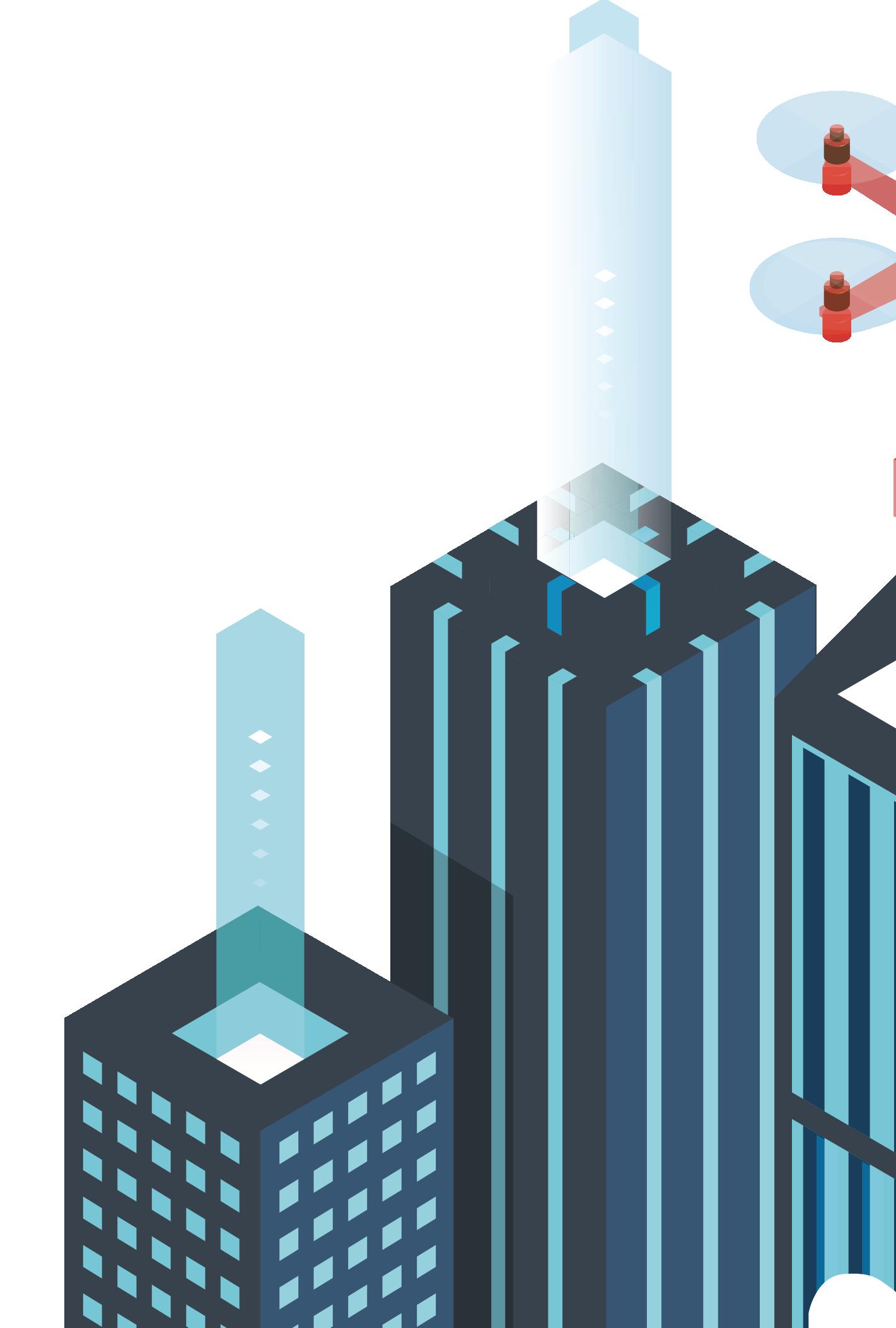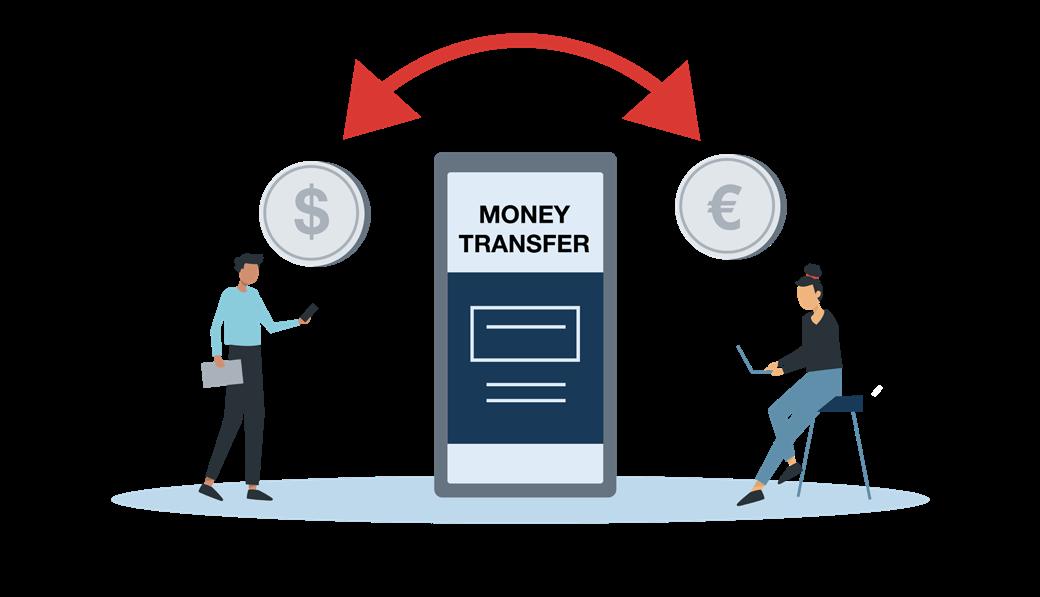
4 minute read
What does the future hold? Vision 2030
Sharing is caring
As earlier mentioned, energy storage will play a major role in meeting the increased electricity demands of the future. Our energy network needs to expand at a higher rate as electrification takes off. Ports, large industrial facilities, and workplaces may have an increasingly vital societal function as energy hubs, with storage that supplies society with electricity. Battery depots, both stationary and in vehicles, can flatten the usage curve, meaning companies can mitigate energy peaks – keeping electricity costs down.
Focus on Ports
Special hubs such as ports can become strategic, central places in taking care of local needs. When companies begin reviewing their value chain and the footprint from their deliveries and exports, these focal points are at the center.
”The first step for companies is to review their emissions; the next step will be to look at the entire value chain, where, for example, the logistics chain must be included. Of course, the port plays an important role as a logistics hub, but also has the potential to play a new role in the development of society, as well as finding new revenue streams, by also becoming energy hubs.”
Johan Granström, Market Segment Lead Smart Cities, ABB
Lead times for new technology
We are moving towards shorter order times, which will revolutionise the industry in several ways.
We see the importance of shorter delivery times in production, which provides betteroptimised machines based on purpose. The closer the delivery takes place to the work that needs to be done, the faster the customer can begin adjustments and meet immediate needs and specific purposes. This also allows new technology to be implemented faster.
Agile Technology
The future is modular: Regarding energy and storage technologies, several alternatives are in different development and launch phases. We see a consolidation of technology where products adapt for future technology and solutions. Most likely, the future will not be dominated by a particular technology, but we will see parallel initiatives started and phased out at a higher rate than before.
”Software plays an increasingly important role in all new solutions. Connectivity allows for improving and upgrading the functionality of solutions effectively. This is one of the benefits of new technologies and crucial for products with a relatively long lifetime.”
Automation
What do automation and robotics mean for the future of heavy machinery? From manufacturing 4.0 * to self-driving vehicles - automation is happening today. The transformation from manned diesel machines to automated electric solutions means many benefits, such as development in safety, sustainability, and productivity.
Customers' and authorities' demand for transparency within the value chain creates an additional role for digitalisation and automation. We will see a need for transparency and traceability in energy systems, where blockchain technology can identify the origin, use, and transaction. When it comes to skills, increased automation means that the need for fundamental cognitive, physical, and manual skills will decrease while the demand for cutting-edge digital and social skills will increase.
* a collective term for a myriad of technologies and concepts within automation, process industrial IT, and manufacturing technologies.
Disruptive payment models

Payment models will be different in the future. Soon we will see suppliers creating incentives to optimise energy use by, for example, charging for the purpose, per lift, or mileage. Directing the use of the machines towards their specific goal makes it easier to calculate and optimise the workplace economically. It will also allow companies to plan production more precisely to meet market needs and reduce financial risk.
Disruptive payment models in combination with circular solutions will be a prerequisite for achieving sustainability goals. We will not see one standard but several rental and leasing models, taking up more space in the future. Thus, the market becomes more democratic as more players gain access to the latest technology and avoid interim debts and writeoffs over time.
From Products to Services

We see a shift from product to service economics around the world. Outside the realm of production-related challenges, the service-driven sector sees sustainability as a hygiene factor and places inexorable demands on transparency and results.

”A trend we see in our industry is an increase in leasing models that can mean longer periods compared to today. In the last ten years, leasing has increased from a small part of our sales to 15%. The benefits become clear when you look at the total cost of ownership.”
Alf Gunnar Karlgren, Vice President, Counterbalanced Container Handler Division, Kalmar
What will the future bring? We don't know – but we have a good idea. This article has highlighted the importance of companies beginning the transformation towards electricity. We know for sure that the world will soon look very different. To combat GHG emissions and counteract climate change, we need brave companies and leaders pioneering the development towards sustainable production. Substantial changes in work culture and operations are required to meet future needs. The time is now. The investments made today will be decisive over the next ten years.
Sources
1. Material Economics (2019). Industrial Transformation 2050 - Pathways to Net-Zero Emissions from EU Heavy Industry
2. Hammer & Somers, 2021. Industrial-resource productivity and the road to sustainability. https:// www.mckinsey.com/business-functions/operations/our-insights/industrial-resource-productivity-andthe-road-to-sustainability.
3. Kalmar, 2018. https://www.kalmarglobal.se/494ecd/globalassets/equipment/forklift-trucks/ electric-forklift-trucks/electric-forklift-trucks-9-18-ton/kalmar-medium-electric-forklift-brochureecg90-180.pdf
4. Piper & Rubel, 2011. Revisiting Energy Storage. https://boston-consulting-group-brightspot. s3.amazonaws.com/img-src/BCG_Revisiting_Energy_Storage_Feb_11_tcm9-236611.pdf
5. Melin, 2019. State-of-the-art in reuse and recycling of lithium-ion batteries- A research review. https://www.energimyndigheten.se/globalassets/forskning--innovation/overgripande/state-of-theart-in-reuse-and-recycling-of-lithium-ion-batteries-2019.pdf
6. CATL, 2021. https://www.catl.com/en/news/665.html
7. Redwood Materials, 2021. https://www.redwoodmaterials.com/
8. Regeringskansliet, 2020. https://www.regeringen.se/artiklar/2020/11
9. The Actuary, 2021. https://www.theactuary.com/news/2021/06/23/renewable-energy-account40-global-power-2030
10. Desjardins, 2019. 7 charts on the future of automation. https://www.weforum.org/ agenda/2019/02/the-outlook-for-automation-and-manufacturing-jobs-in-seven-charts
11. Deloitte and The Manufacturing Institute, 2018. Deloitte and The Manufacturing Institute skills gap and future work study. https://www2.deloitte.com/content/dam/insights/us/ articles/4736_2018-Deloitte-skills-gap-FoW-manufacturing/DI_2018-Deloitte-MFI-skills-gap-FoWstudy.pdf
12. Eccles & Mulliken, 2021. Carbon Might Be Your Company's Biggest Financial Liability. https:// hbr.org/2021/10/carbon-might-be-your-companys-biggest-financial-liability
13. Cargotec, 2021. Cargotec and SSAB Pioneering Fossil-Free Steel in Cargo Handling Industry. https://www.cargotec.com/en/nasdaq/press-release-kalmar-hiab-macgregor/2021/ cargotec-and-ssab-pioneering-fossil-free-steel-in-cargo-handling-industry/
14. Volvo Group, 2021. Driving a Hydrogen Future. https://www.volvogroup.com/en/news-andmedia/events/2021/apr/daimler-truck-ag-and-volvo-group-launch-cellcentric.html
15. Forsgren & Tschiesner, 2019. Harnessing momentum for electrification in heavy machinery and equipment. https://www.mckinsey.com/industries/automotive-and-assembly/our-insights/harnessing-momentum-for-electrification-in-heavy-machinery-and-equipment
16. Heineke, Möller, Padhi, Schwedhelm, & Tschiesner, 2021. The irresistible momentum behind clean, electric, connected mobility: Four key trends. https://www.mckinsey.com/industries/automotive-and-assembly/our-insights/the-irresistible-momentum-behind-clean-electric-connectedmobility-four-key-trends?cid=other-eml-alt-mip-mck&hdpid=b89a3d19-0d93-4103-89d5-6c63953c1dee&hctky=12067437&hlkid=254598169d0d482883d0521496157dbc
17. Bughin, Hazan, Lund, Dahlström, Wiesinger, & Subramaniam, 2018. Skill shift: Automation and the future of the workforce. https://www.mckinsey.com/featured-insights/future-of-work/skill-shiftautomation-and-the-future-of-the-workforce
18. IEA, 2020. Renewables 2020, IEA, Paris https://www.iea.org/reports/renewables-2020
19. Ny Teknik, 2021. Svensk Storsatsning: Mer stöd till elbussar och laddstolpar. https://www. nyteknik.se/fordon/svensk-storsatsning-mer-stod-till-elbussar-och-laddstolpar-7021057?utm_ source=linkedin
20. Cargotec, 2021. Cargotech sustainability report.
21. Willings, 2021. Bensin- och dieselförbuden: Vad du behöver veta om bilförbud i Storbritannien. https://www.pocket-lint.com/sv-se/bilar/nyheter/151630-bensin-och-diesel-forbjuder-vad-du-behover-veta
22. Dassault systems, 2020. Sustainable Manufacturing, a Guide to Transformation. https://discover.3ds.com/sites/default/files/2020-01/sustainable-manufacturing-guide-transformation-ebook.pdf







